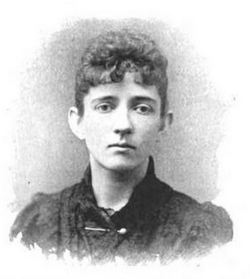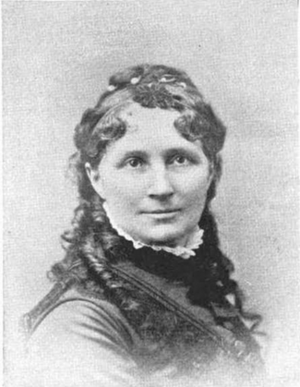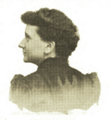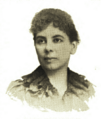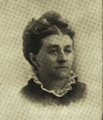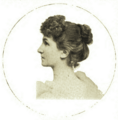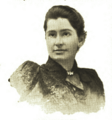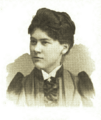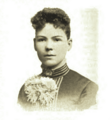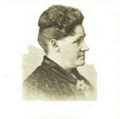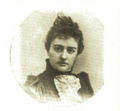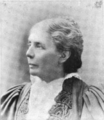Pacific Coast Women's Press Association facts for kids
| Abbreviation | PCWPA |
|---|---|
| Formation | September 27, 1890 |
| Founder | Emelie Tracy Y. Swett |
| Founded at | 1941 |
| Headquarters | San Francisco, California |
|
Main organ
|
The Impress |
The Pacific Coast Women's Press Association (PCWPA) was an important group for women writers and journalists. It was active from 1890 until 1941. This organization was based on the West Coast of the United States. Members worked together to improve public services. They focused on things like roads, parks, libraries, and schools. They also wanted to stop misleading advertising and sensational news stories.
Contents
How the PCWPA Started
Before 1890, women working in newspapers or as authors on the U.S. Pacific coast often worked alone. They didn't have the support or benefits that came from being part of a group. In other parts of the United States, similar groups for women had existed since the 1880s. Many of these early groups were mainly for social gatherings.
After almost three years of planning, about 150 invitations were sent out. These invitations went to women journalists and authors on the Pacific coast. They were asked to meet in San Francisco, California. The meeting took place on September 27, 1890, at the home of Emelie Tracy Y. Swett. Fifty women attended the meeting. Everyone who was invited sent letters of support. They promised to help the new organization.
What the PCWPA Did
The PCWPA adopted rules similar to the New England Woman's Press Association. The main goal of the PCWPA was to help women improve their skills. They did this by sharing ideas and methods often.
The first year was spent getting the organization up and running. They collected and organized a library of hundreds of books. By the end of that first year, the Association had 125 active members.
Members worked on projects to improve public services. These included roads, streets, parks, and libraries. They also supported village improvement groups. They helped create free exhibits of local resources. The group also worked to stop misleading advertisements. They also wanted to prevent newspapers from publishing too many shocking crime details. Another goal was to help develop kindergartens. To help with their work, the Association published special reports. The first report was about "Country Roads and City Streets." It was written by Mary Lynde Hoffman, who owned a lot of property. Over 500 notices were sent to the Association about this report alone.
In its first three years, the Association got money from membership fees and donations. The group hoped to build its own building in San Francisco one day. They planned to use rent from this building to cover their costs. This money would also help members who were sick.
The Association's library grew to over 500 books. They also had many leading daily, weekly, and monthly newspapers. The group wanted to collect all the published works by its members first. Then they wanted books by other Pacific coast writers. After that, they aimed for reference books and rare books. The organization's librarian was a member of the American Library Association.
Many newspaper writers at that time did not get credit for their work. Their articles were often published without a name. The PCWPA was a member of several larger groups. These included the General Federation of Women's Clubs and the International League of Press Clubs. This helped them stay connected with other organizations.
The PCWPA stopped operating after 1941.
Important Leaders
Emelie Tracy Y. Swett founded the Association in 1890. Nellie Blessing Eyster was chosen as the first president. The first Executive Board included:
- Jeanne Caroline Smith Carr from Pasadena, California, First Vice-President
- Sarah Brown Ingersoll Cooper, Second Vice-President
- Ella Rhoads Higginson from Whatcom, Washington, Third Vice-President
- Emelie Swett, Corresponding Secretary
- Nellie Verrill Mighels Davis from Carson City, Nevada, Recording Secretary
- Mary Olmstead Stanton, Treasurer
- Isabel H. Raymond from Santa Cruz, California, Auditor
In 1893, Emily Browne Powell became president. Other leaders that year included:
- Sarah Brown Ingersoll Cooper, First Vice-President
- Charlotte Perkins Stetson Gilman, Second Vice-President
- Minna V. Gaden, Corresponding Secretary
- Florence Percy Matheson, Treasurer
- Adeline Knapp, Chairman of the Program Committee
Key Members
Many talented women were part of the PCWPA. Some of the active members in the first year included:
- Caroline Severance, who was the first president of the first women's club in Boston.
- Eliza D. Keith from the San Francisco News Letter.
- Carrie Stevens Walter, who owned and edited the San Josean.
- Mary G. Charlton Edholm from the Oakland Tribune.
- Mary Bourne Watson from the Morning Call in San Francisco.
- Mattie P. Owen, editor of the Golden Way.
- Mary C. Bowman, who owned and edited the Santa Paula Chronicle.
- Emeline North, a correspondent for papers in Russia and Ukraine.
- Mary Lynde Hoffman, who wrote about road and street building.
- Josephine White Bates, a writer.
- Genevieve Lucile Browne from the Californian.
- Louise E. Francis, editor of the Castroville Enterprise.
- Maggie Downing Brainard from the Pacific Tree and Vine.
Many members wrote for newspapers and magazines across the country and even in Britain. Some notable members included:
- Helen Gregory-Flesher, a Canadian writer who contributed to many American and New York magazines.
- Mary F. McRoberts, an Englishwoman who wrote from California for the English press.
- Emma Russell Endres, another Englishwoman who was a correspondent for the London Times.
- Jessie Benton Fremont, an author who helped California become a free state.
- Grace Hibbard, a California poet.
- Rose Hartwick Thorpe, author of the famous poem Curfew Must Not Ring Tonight. Queen Victoria herself had memorized this poem.
- Anna Morrison Reed, editor of the Northern Crown, who wrote a lot of prose and poetry.
- Kate Douglas Wiggin, known for her work with kindergartens and as an author.
- Virna Woods, a poet.
- Mary Catherine McIntire Pacheco, a playwright from Kentucky.
- Gertrude Francis Atherton, a novelist.
- Helena Modjeska, a famous actress, was an honorary member.
- Emily Browne Powell, a past president, wrote for the Tribune and The San Francisco Call.
- Mary E. Hart, who owned and edited the Pacific Monthly.
- Ada Henry Van Pelt, editor of the Pacific Ensign, who was very involved in Red Cross work.
- Josephine Clifford McCracken, author of Overland Tales.
- Rose O'Halloran, a scientific writer and expert on sunspots.
Other important women included Abbie E. Krebs, a newspaper writer and president of a lumber company. Sara E. Reamer was the Association's first librarian and historian.
The Impress: Their Newspaper
The Impress was the monthly newspaper of the PCWPA. It was first called The Bulletin. It started on October 6, 1893, and was published weekly. Charlotte Perkins Stetson was the editor. Helen Stuart Campbell was the associate editor.
The Impress aimed to share news from the Pacific coast each week. It also discussed important topics of the day. The paper included reviews of books, plays, art, and music. It also featured articles on art and education, along with poetry, fiction, and humor. While not only a women's paper, The Impress recognized the importance of the women's movement. It dedicated space and attention to it. The PCWPA had its own page in the paper. Other women's organizations were also featured. The Impress was valued as a family-friendly newspaper. A special section called "The Art of Living" was run by Helen Campbell.
Gallery


